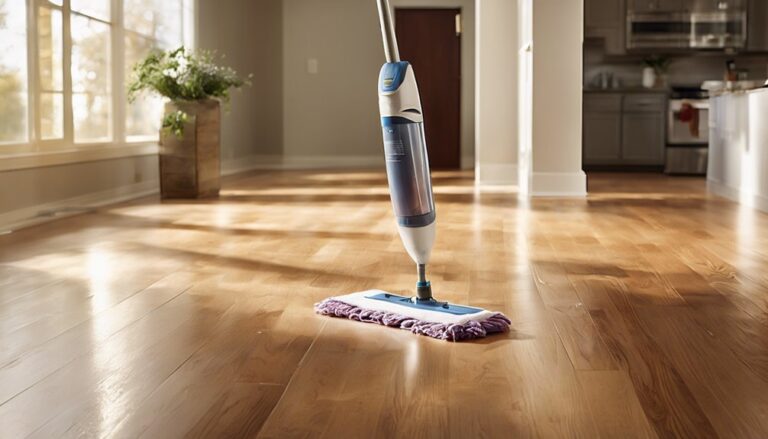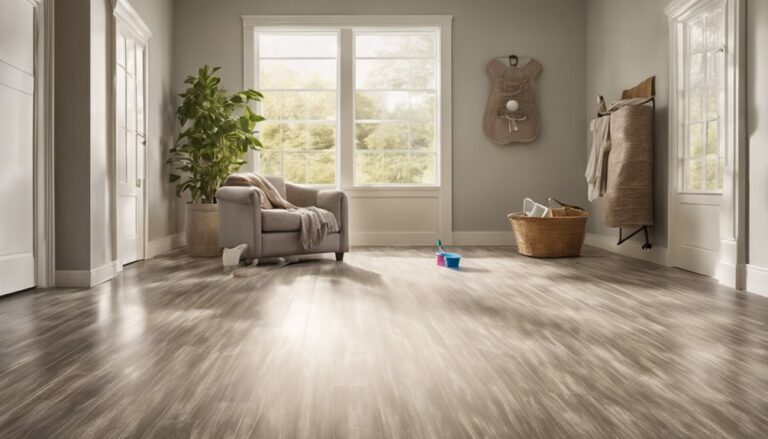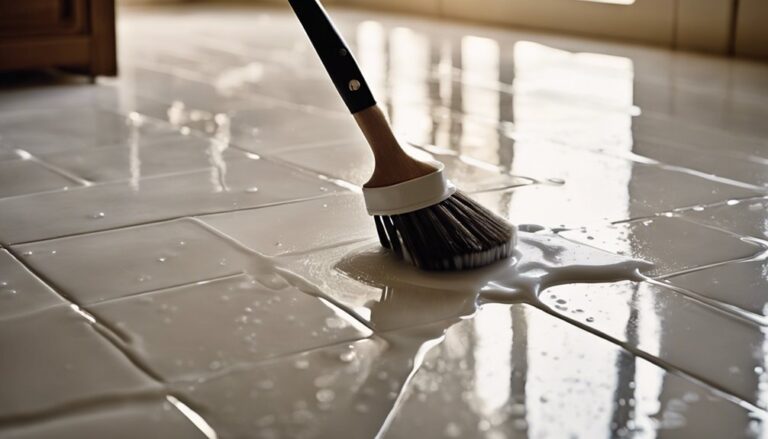Queefing is a natural bodily function and doesn't necessarily reflect a weak pelvic floor. Many factors, including movements during physical activity or intimacy, can cause air to become trapped and later expelled. It's important to know that even individuals with strong pelvic health can experience queefing. While engaging in pelvic exercises like Kegels can help minimize occurrences, queefing alone isn't a health concern. If you're experiencing frequent queefing alongside other symptoms like discomfort or leakage, it might be wise to consult a professional. There's more to understand about pelvic health and its connection to queefing, so keep exploring!
Understanding Queefing

Although it can be an embarrassing topic, understanding queefing is essential for recognizing its impact on pelvic sol health. Queefing occurs when vaginal air is expelled, often during sexual activity or specific movements. It's a natural bodily function, and knowing this can alleviate feelings of shame or anxiety. Many individuals experience queefing at some point, and it doesn't necessarily indicate a weak pelvic floor. Engaging in pelvic exercises, like Kegels, can strengthen the pelvic muscles, potentially reducing occurrences of queefing. By focusing on pelvic health, you empower yourself to embrace your body's functions without fear. Remember, open conversations about these topics can foster understanding and remove stigma, leading to greater comfort and confidence in your own skin.
Anatomy of the Pelvic Floor
The pelvic floor is a complex structure of muscles, ligaments, and connective tissue that plays an essential role in your overall health. Understanding your pelvic anatomy is fundamental for recognizing how muscle function affects your body. This area supports critical organs and contributes to core stability, sexual function, and bladder control.
| Component | Fonction |
|---|---|
| Muscles | Support and stabilize organs |
| Ligaments | Provide structural integrity |
| Connective Tissue | Facilitate movement and elasticity |
When your pelvic floor is strong and functioning well, you're more likely to experience freedom in daily activities. Recognizing the interconnectedness of these components can empower you to take charge of your pelvic health.
Common Myths About Queefing

Have you ever wondered what really lies behind the phenomenon of queefing? Many people hold queefing misconceptions, believing it only happens to those with weak pelvic floors. This isn't true; queefing can occur in individuals with strong pelvic health as well. Another common pelvic health myth is that it's always a sign of discomfort or embarrassment. In reality, queefing is a natural occurrence and doesn't necessarily indicate a problem. It's crucial to recognize that everyone's body is unique, and factors such as anatomy and movement can contribute to queefing. By debunking these myths, you can approach the topic with understanding and acceptance, freeing yourself from unnecessary shame or concern about this normal bodily function.
Factors Contributing to Queefing
While queefing can be unexpected and sometimes embarrassing, understanding the factors that contribute to it can help demystify the experience. Several causes of queefing stem from lifestyle factors, such as engaging in vigorous physical activities, like yoga or dance, where air can get trapped. The position during intimate moments can also play a role, allowing air to enter the vaginal canal. Additionally, certain anatomical variations and hormonal changes can influence how often you may experience queefing. It's important to recognize that this phenomenon is common and doesn't necessarily indicate a problem. By acknowledging these factors, you can approach queefing with more confidence and less embarrassment, embracing your body's natural responses.
Pelvic Floor Strength and Health

Understanding the importance of pelvic floor strength and health is essential for everyone, as it plays an important role in various bodily functions, including bladder control, sexual health, and even posture. By engaging in pelvic exercises, you can improve muscle recovery and enhance your overall well-being.
| Avantage | Pelvic Exercises | Muscle Recovery |
|---|---|---|
| Bladder Control | Strengthens pelvic muscles | Reduces urinary incontinence |
| Sexual Health | Enhances sensation | Improves recovery post-pregnancy |
| Posture | Supports core stability | Alleviates lower back pain |
| Overall Well-being | Boosts confidence | Encourages body awareness |
Taking time to focus on your pelvic health can lead to a more empowered and liberated feeling in your body.
When to Seek Professional Advice
If you're experiencing signs of pelvic weakness, like frequent queefing or discomfort, it's important to contemplate seeking professional advice. These issues can greatly impact your daily life, and addressing them early can lead to better outcomes. Understanding your assessment options can help you take the next steps towards improved pelvic floor health.
Signs of Pelvic Weakness
Recognizing the signs of pelvic weakness is essential for maintaining your overall pelvic floor health. If you experience frequent urinary leakage, discomfort during intercourse, or persistent pelvic pressure, it's time to pay attention. These symptoms can indicate muscle imbalances that may benefit from targeted pelvic exercises. Difficulty controlling gas or bowel movements can also signal a need for professional evaluation. Remember, seeking help isn't a sign of weakness; it's a step toward empowerment and freedom in your body. If you notice any of these signs, don't hesitate to consult a healthcare provider specializing in pelvic health. Early intervention can make a significant difference in your well-being and help you regain confidence. Your body deserves the best care.
Impact on Daily Life
Experiencing pelvic floor issues can considerably affect your daily life, often leading to anxiety and discomfort in routine activities. You might find yourself avoiding social situations due to fear of queefing, resulting in social embarrassment that can undermine your confidence. Physical discomfort, whether during exercise or intimate moments, can also create a sense of limitation. If you notice these challenges interfering with your enjoyment of life or affecting your relationships, it's important to recognize that seeking help is a sign of strength, not weakness. Remember, you deserve to feel free and comfortable in your own body. Don't hesitate to consult a professional if you're concerned about how these issues are impacting your daily experiences. Your well-being is worth it.
Professional Assessment Options
When should you consider seeking professional advice about pelvic floor health? If you're experiencing symptoms like queefing that impact your confidence or daily life, it's crucial to reach out. A professional assessment can help identify underlying issues and guide you towards effective solutions. Here are some signs it might be time to consult a specialist:
- Persistent queefing during physical activities
- Discomfort or pain in the pelvic area
- Difficulty with bladder or bowel control
- Changes in sexual function
Physiotherapy techniques tailored to your needs can greatly improve pelvic floor health. A thorough pelvic assessment will provide you with personalized strategies for recovery, empowering you to reclaim your freedom and comfort. Don't hesitate—your well-being deserves attention and care.
Questions fréquemment posées
Can Queefing Occur During Exercise or Physical Activity?
Imagine a balloon filled with air, suddenly releasing a puff—this can symbolize what happens during exercise. Queefing can indeed occur during physical activity, often tied to the queefing frequency you experience. The impact of exercise on your body can lead to air getting trapped and escaping, causing these sounds. It's completely normal, so don't feel embarrassed. Embracing your body's reactions during workouts is part of the freedom to move confidently.
Are There Specific Activities That Increase Queefing Episodes?
Certain activities can indeed increase queefing episodes. Yoga poses, especially those involving deep stretching or inversion, might lead to air being trapped and released. Additionally, high-impact sports like running or jumping can also contribute, as they exert pressure on the pelvic area. It is important to remember that this is a natural occurrence for many, so don't feel embarrassed. Understanding your body can help you navigate these moments with confidence and ease.
Does Age Affect the Likelihood of Queefing?
Have you ever wondered how age impacts your body's functions? As you age, hormonal influences and age-related changes can affect the pelvic floor muscles, potentially increasing the likelihood of queefing. These changes may lead to a variety of experiences, but it's important to remember that every body is unique. Understanding these factors can empower you to embrace your body's natural processes while maintaining your overall well-being and confidence.
Is Queefing More Common in Certain Body Types?
Queefing can happen to anyone, but it might be more noticeable in certain body types due to differences in pelvic health and anatomy. For instance, individuals with a wider pelvis may experience queefing more frequently. It's important to remember that every body is unique, and factors like muscle tone and flexibility can also play a role. Understanding your body's mechanics can empower you to address any concerns and enhance your pelvic health.
Can Medical Conditions Cause Increased Queefing?
Yes, certain medical conditions can increase queefing. For instance, issues like pelvic floor dysfunction or excessive gas can contribute to this phenomenon. If you're experiencing frequent queefing, it's important to contemplate underlying causes, such as hormonal changes or certain gastrointestinal problems. Seeking guidance from a healthcare professional can help you understand your symptoms better and address any concerns you may have, promoting your overall pelvic floor health and well-being.




